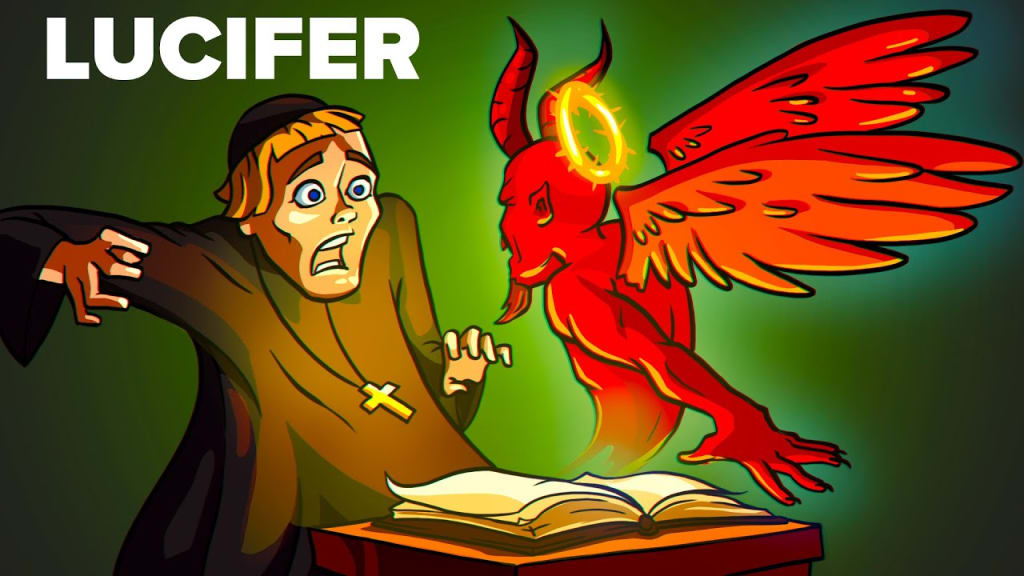
In the annals of religious lore, there exists a figure whose name strikes fear into the hearts of believers and non-believers alike: Satan. Known by many names—Lucifer, the Devil, the Prince of Darkness—his presence looms large in the collective consciousness, a symbol of rebellion and malevolence. But what if the truth about Satan is far more nuanced than the tales spun by centuries of myth and doctrine?
At the heart of the traditional narrative lies the story of a fallen angel, once bathed in the radiance of God's favor, who dared to challenge divine authority. Cast out of heaven along with his legion of followers, Satan became the embodiment of evil, prowling the earth in search of souls to corrupt. Yet, the biblical account offers a different perspective—one that challenges our preconceived notions of good and evil.
In the Book of Job, Satan appears not as a malevolent adversary but as a celestial prosecutor, tasked with testing the faith of God's righteous servant. Granted permission to afflict Job with suffering, Satan acts not out of malice but as a servant fulfilling his assigned duty. Despite Job's trials, his steadfast devotion to God earns him divine favor and eventual redemption.
Centuries later, Satan emerges once more in the desert, where he confronts Jesus during his forty days of fasting. Through a series of temptations, Satan seeks to exploit Jesus's vulnerabilities, offering him earthly power and glory in exchange for his allegiance. Yet, Jesus resists each temptation, affirming his commitment to divine purpose over worldly gain.
These encounters with Satan reveal a figure far more complex than the caricature of evil portrayed in popular culture. In fact, the Hebrew origins of the word "Satan" suggest a role as an accuser or adversary rather than a malevolent force. Seen in this light, Satan serves as a moral arbiter within the divine court, testing humanity's resolve and highlighting their vulnerabilities.
The evolution of Satan's character reflects shifts in religious thought and cultural influences over time. Originally conceived as a symbolic figure within Jewish theology, Satan later assumed a more prominent role in Christian doctrine, mirroring dualistic beliefs prevalent in neighboring Zoroastrianism.
Jesus's interactions with Satan symbolize internal struggles rather than literal confrontations with a supernatural foe. Through temptation, Jesus confronts the allure of selfish desires, the temptation of personal glory, and the seduction of material wealth. His steadfast resistance underscores the triumph of spiritual values over earthly temptations.
Yet, despite Satan's pivotal role in shaping religious narratives, his status as a fallen angel in eternal conflict with God remains a matter of theological interpretation. The earliest biblical texts offer a more nuanced perspective, suggesting Satan's role as a divine instrument rather than a cosmic adversary.
In truth, Satan's legacy is as much a reflection of human psychology as it is of divine decree. As the embodiment of temptation and adversity, he challenges believers to confront their inner demons and reaffirm their faith in the face of adversity. In this sense, Satan serves not as a malevolent enemy but as a catalyst for spiritual growth and self-discovery.
As we unravel the enigma of Satan, we are reminded that truth often lies beyond the veil of myth and dogma. In exploring the complexities of his character, we uncover deeper truths about the human condition and our eternal struggle between light and darkness. And perhaps, in embracing this complexity, we find the key to transcending the age-old dichotomy of good and evil.
Beyond the realm of religious doctrine, the figure of Satan continues to captivate the human imagination, inspiring countless works of art, literature, and film. From Milton's epic poem "Paradise Lost" to Dante's "Inferno," Satan has been portrayed as a tragic hero, a cunning adversary, and even a sympathetic figure. Yet, amidst the myriad interpretations, one thing remains clear: the enigma of Satan will continue to intrigue and beguile us for generations to come.
In conclusion, the myth of Satan serves as a potent reminder of humanity's eternal quest for meaning and purpose. Whether viewed as a literal adversary or a metaphorical symbol, Satan challenges us to confront our deepest fears and embrace the light within ourselves. And perhaps, in facing this ultimate adversary, we discover the true essence of our own divine nature.
About the Creator
Gunduz
Explore captivating tales and thought-provoking perspectives. Join me for an enlightening journey through imagination and insight.
Contact:
Instagram: gunduz.asadli






Comments
There are no comments for this story
Be the first to respond and start the conversation.